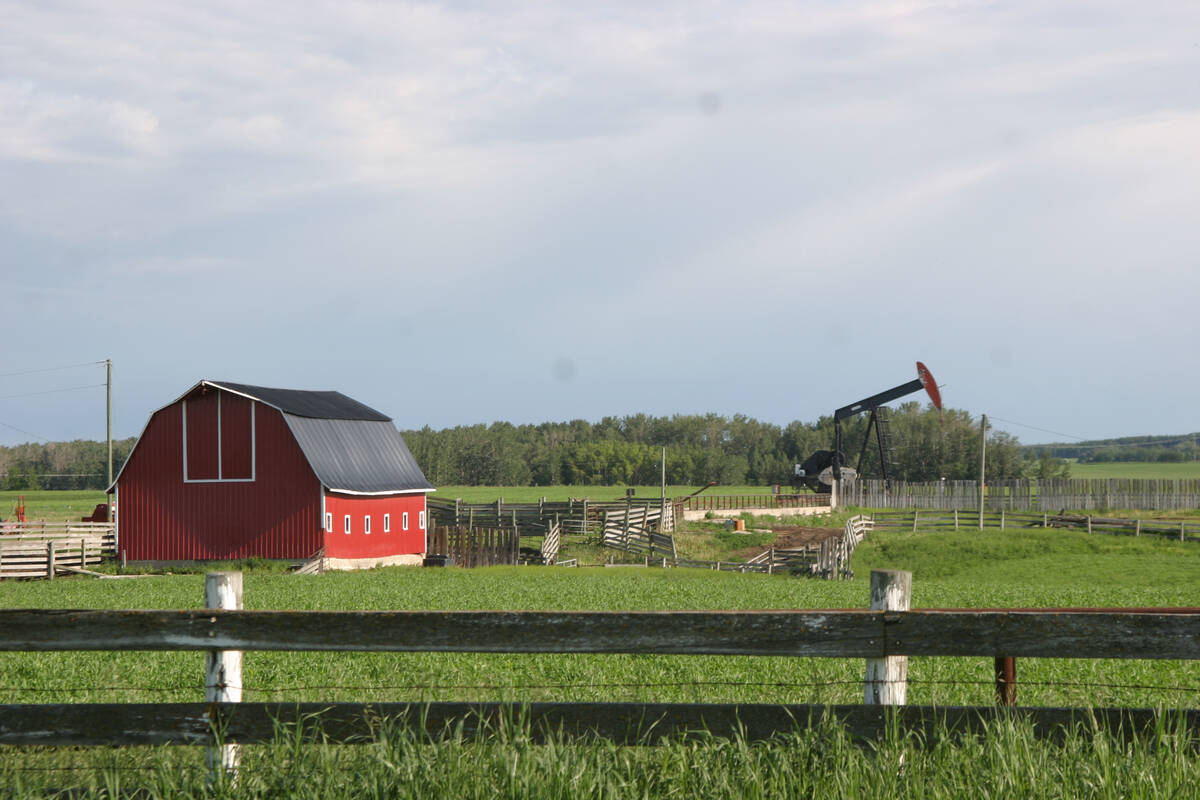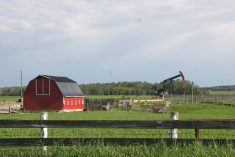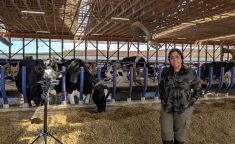Who knew that cold air drains much like water off a sloped field? Strawberry growers do.
“If you have a sloped field, the cold air can then drain off the field and that reduces your chances of getting frost damage,” Lloyd Hausher of L and A Entreprises told attendees at the recent Alberta Farm Fresh Producers conference.
Naturally, you also want a sloped site for good water drainage, and one without depressions (pooled water will drown plants). You do want shelter, such as a shelterbelt, to prevent desiccation during the hot, dry summer and provide protection in winter, said Hausher, who has worked with the fruit crop program in Alberta Agriculture in Brooks and has been involved in the fruit industry in Alberta since the 1970s.
Read Also

Recommendations in the mature assets strategy could cause potential problems for landholders
The Western Stock Growers’ Association urges producers to pay attention to the potential changes to Alberta’s Mature Assets Strategy.
Because strawberries bloom early in spring, they’re susceptible to late-spring frost – another reason to ensure there are no depressions where cold air gathers.
There are two types of strawberries; June bearers and day neutrals, and Hausher recommends having both to extend the season. June bearers need a year before they produce fruit. They grow in a cycle, and have higher production than day neutrals, which are only good for two years. About 75 to 80 per cent of the strawberries grown in Alberta are June bearers.
The size of the strawberry is related to soil temperatures. Strawberries do not like heat and they need to be cooled with water, shade or mulch. Strawberries grow best in a sandy loam soil with a two to three per cent organic matter content and a pH of six to seven.
“At that pH, virtually all the nutrients in the soil are available to the plants,” Hausher said.
They should be planted about one foot apart in their row, with about four feet between rows.
“Don’t use this number for row spacing as gospel, because you need to figure out what machinery you’re going to go through there with to cultivate if you’re spraying for insects or diseases,” said Hausher. “How far apart are those wheels on your tractor? You don’t want to go through there to do some of those field operations and have one wheel running over your rows.”
Weed control
Weed control is a critical issue.
“You’re not planting an annual crop where you have an opportunity to summerfallow or cultivate early in the fall or next spring,” Hausher said. “Once these plants are in the ground, any weeds that are still there will be hard to control.”
He recommends one to two years of summerfallow or green manure before planting strawberries. The worst thing a producer can do is to plant strawberries into grain stubble. Herbicide or fungicide should be applied prior to planting, and soil tests taken to measure nitrogen, phosphorus, potassium, sulphur and calcium. The ideal numbers are 65 pounds per acre of nitrogen, 90 pounds per acre of phosphorus, and 355 pounds per acre of potassium, and should be applied prior to planting.
Ninety per cent of the root for June bearer is in the top 12 inches, and over the next three seasons, older roots will die out and be replaced by younger ones. This results in the root system moving from 10 to 12 inches to the top six to eight inches of soil, which increases the need for more frequent watering and nutrient application.
“It’s important to remember that as the plant gets older the root system gets shallower and shallower,” Hausher said.
Nitrogen leaching is a special concern.
“The nitrogen timing affects runnering, leaf size and berry size,” he said. “You don’t want to apply it in the late fall, any time after early August, because it delays dormancy.” Excessive application of nitrogen in early spring can cause a real boost in leaf mass and bees may not be able to get into the blossoms to pollinate. Summer is the best time to apply nitrogen.
Planting techniques
Transplanters are a must for large areas, but anything under 3,000 plants can be done by hand. Planting should be done around May.
“You want to make sure that when those are set in the ground, whether you’re doing it by hand or by machine, that they are planted at crown depth,” he said. “It’s better to be slightly too deep than too shallow.”
In the spring of the first year, producers should nip off the flower bud clusters from developing plants. This should only be done once or twice.
“There are two ways for the plant to reproduce. If it can’t reproduce by seed or flower, it will increase the amount or speed of runner production,” Hausher said. “Your main purpose the first year is to fill that row in as thick as possible, with runners and plants. You want to develop a nice, thick full-matted row by fall.”
The most critical time is late summer, as the plant builds itself up after fruit harvest and runnering is complete. Plants split in August and late September and form flower buds in September and October.
“You can usually gauge what next year’s crop will be like based on this year’s fall,” said Hausher.
“If we have a long fall of warm weather, without a killing frost, there’s a good chance we’ll have a good flower next year. It’s important to have your nutrients up to level at this period of time and monitor your moisture levels.”
Post-harvest
Ideally, most strawberries should be harvested by the first of August, and the top leaves of plants mowed with a rotary mower by August 5.
“If you’re just getting into harvest at the beginning of August, don’t worry about this because you’ll be doing more harm than good,” said Hausher. “But if we get an early spring and early summer and most of the harvest is done, then there are benefits from cutting the top leaves off the strawberries. A strawberry leaf is only doing the plant any good for three months. After that, it just sits there and shades the later-grown leaves underneath.”
After mowing, growers should narrow rows with a rototiller, work in straw mulch between rows, and apply about an inch of water a week to break down the straw and encourage plant growth. After the plants have produced their first crop, they should be broadcast with 50 to 80 pounds of nitrogen per acre, rototilled and irrigated.
Before shutting down for winter, herbicide should be applied, and then four to six inches of clean wheat or rye (not oat or barley) straw put down. There should be about five to six days of -7 to -8 C temperatures, which is often in the first two weeks of November.
“If you apply the straw too early, when the plants are still growing, you can do some real damage to the plants,” Hausher said.
The mulch needs to be removed in the spring before new growth starts.
“If you see green leaves under the mulch, those are last year’s leaves that never lost the chlorophyll. When the plant starts growing in the spring, it’s going to be out of the crown and there will be little white or yellow new nodes.”
———
“You’renotplantinganannualcropwhereyouhaveanopportunity tosummerfalloworcultivateearlyinthefallornextspring.Once theseplantsareintheground,anyweedsthatarestilltherewillbe hardtocontrol.”
Lloyd Hausher















